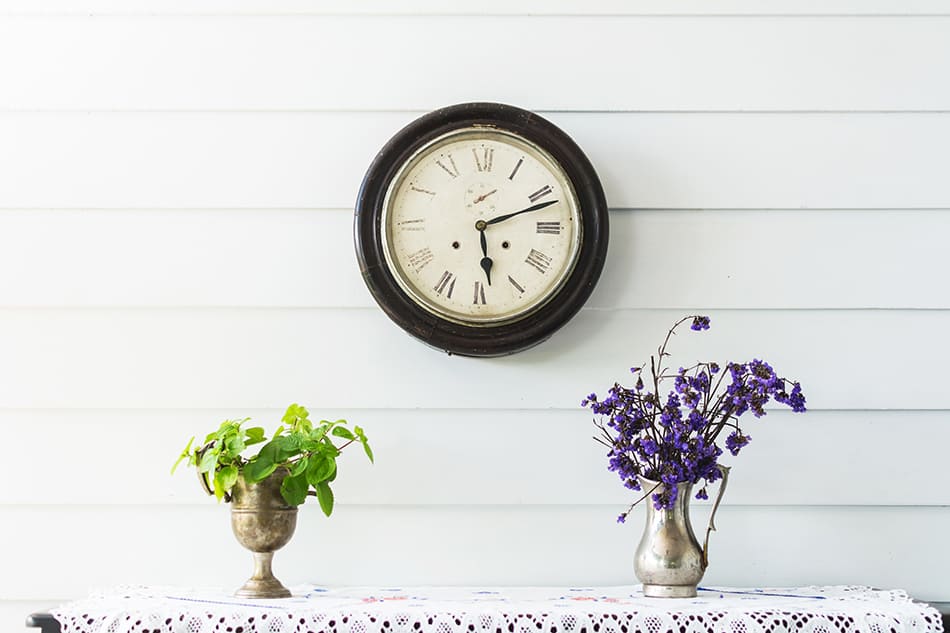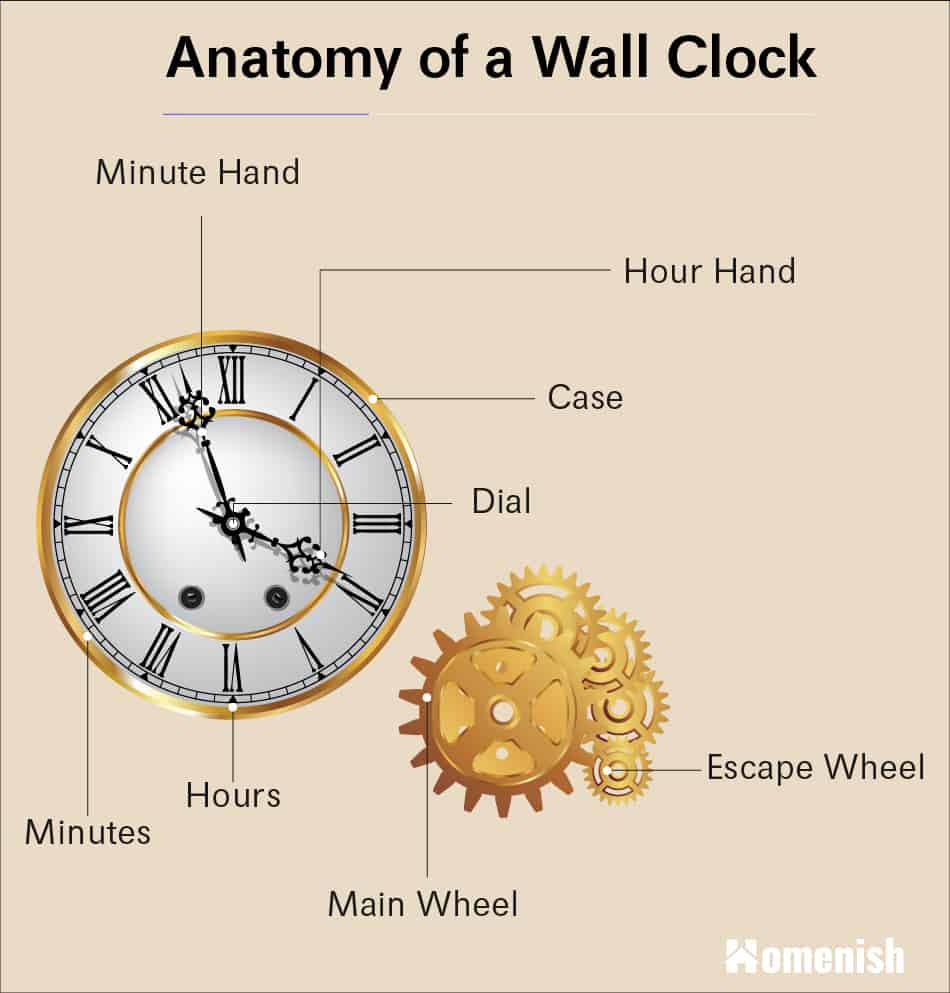A wall clock has been an essential part of every house since its invention. We’ve seen it in old castles, hotels, reception areas, and almost any house.
Here you’ll read about the part of a wall clock and how to set, balance, and wind the most common types of wall clocks.
This post will detail the wall clock parts. If you want to find out the anatomy of a grandfather clock, check out this article.
Anatomy of a Wall Clock
A wall clock, like a traditional clock, should constitute these parts.
Main Wheel
Basically, a mechanical or pendulum wall clock is operated on a train of wheels. The main wheel is the power train of your clock.
Escape Wheel
This is the pendulum or the toothed wheel that turns in the escapement of a clock. A traditional wall clock has many wheels from the great/first wheel, center wheel to the 4th wheel. And escape wheel is usually the small last wheel in the wheel connection.
Minute Hand
The minute hand, of course, is the longer hand that shows minutes.
Hour Hand
This is the much shorter hand that indicates the hour.
Case
The clock’s case is the body that houses the elements of a clock.
Minutes
Contrasted to the minute hand, this is simply the series of bars in the sides of the clock that’s utilized to show minutes.
Dial
The dial is the face of a clock that informs the hours and minutes through a system of fixed-numbered dial or dials and moving hands in an analog clock.
Face
The face is part of a clock that’s marked with measurements for systems of the time.
Hours
These are the thicker or more noticeable bars on the clock’s sides that separate the minutes and utilized to suggest hours.
Caring and Maintenance for Your Wall Clock
Here are some prerequisite things you should do to set up, care for, and maintain the wall clock.
- Do not put it in heated places like above a fireplace, or under the sun, which can affect the timekeeping function in the long term.
- When winding, do it with enough force. This is not only to avoid breaking the winding button but also to prevent causing friction to the mainspring that can stop the clock.
- For a wall clock with a pendulum, when moving your wall clock, lock or hold the pendulum to prevent it from being damaged.
- Check and service your wall clock every 3- 5 years. If you have some knowledge, you can oil the clock yourself. If not, please check with a clock repairer not to overoil your clock.







